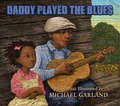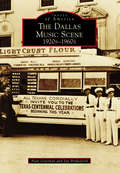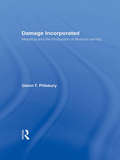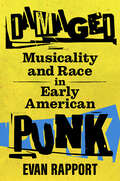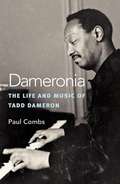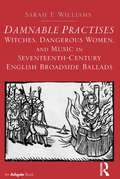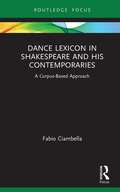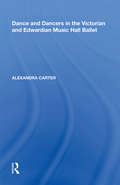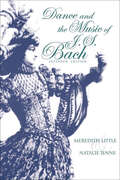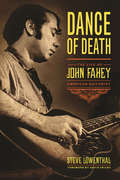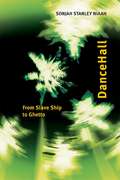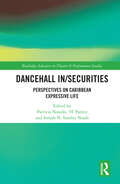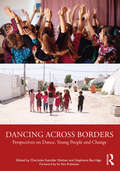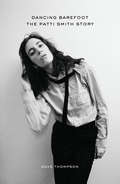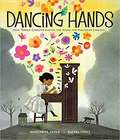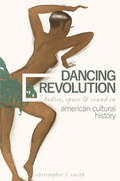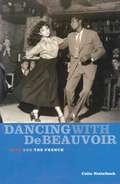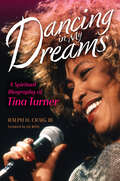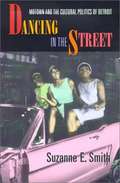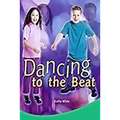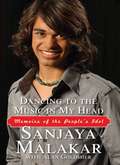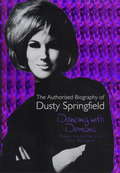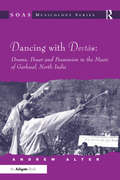- Table View
- List View
Daddy Played the Blues
by Michael Garland*Notable Social Studies Trade Books Selection for Young People 2018* “I was six years old the day we left the farm in Mississippi,” remembers Cassie in this richly textured picture book. “Between the boll weevils, the floods, and the landlord, there was no way a family could scratch out a living there anymore.” Packing themselves into an old jalopy—with Daddy, Uncle Vern, and Mama in the front seat and Cassie and her two brothers in the back—they joined the Great Migration from the impoverished Deep South to Chicago, where there was work to be had in the stockyards. Across the kids’ laps lay Daddy’s prized possession, a six-string guitar. Daddy worked hard to put food on the table, but what he really loved was playing the blues. This evocative tale of the African-American odyssey in search of a better life is also a homage to the uniquely American music that developed from African music and American spirituals, work songs, and folk ballads. In the book’s backmatter, Garland relates how he first heard and fell in love with blues music, beginning a lifelong fandom. Portraits and thumbnail biographies of great blues musicians and landmark songs complete this tribute to the great American music and the yearnings that produced it. Fountas & Pinnell Level S
Dallas Music Scene: 1920s-1960s, The
by Alan Govenar Jay BrakefieldFor much of the 20th century, Dallas was home to a wide range of vital popular music. By the 1920s, the streets, dance halls, and vaudeville houses of Deep Ellum rang with blues and jazz. Blind Lemon Jefferson was discovered singing the blues on the streets of Deep Ellum but never recorded in Dallas. Beginning in the 1930s, however, artists from Western swing pioneer Bob Wills to blues legend Robert Johnson recorded in a three-story zigzag moderne building at 508 Park Avenue. And from the late 1940s to the mid-1960s, a wrestling arena called the Sportatorium was home to a Saturday night country and rock-and-roll extravaganza called the Big "D" Jamboree.
Damage Incorporated: Metallica and the Production of Musical Identity
by Glenn Pillsbury"Damage Incorporated" is the first book about the legendary heavy metal band Metallica that provides a detailed exploration of the group’s music and its place within the wider popular music landscape. Written with a broad readership in mind, it offers an interdisciplinary study that incorporates a range of topics which intersect with the band’s music and cultural influence. For students of popular culture, mass media, and music, "Damage Incorporated" will be necessary reading, and sets a new standard for the study and exploration of metal within the field of popular music studies.
Damaged: Musicality and Race in Early American Punk (American Made Music Series)
by Evan RapportDamaged: Musicality and Race in Early American Punk is the first book-length portrait of punk as a musical style with an emphasis on how punk developed in relation to changing ideas of race in American society from the late 1960s to the early 1980s. Drawing on musical analysis, archival research, and new interviews, Damaged provides fresh interpretations of race and American society during this period and illuminates the contemporary importance of that era.Evan Rapport outlines the ways in which punk developed out of dramatic changes to America’s cities and suburbs in the postwar era, especially with respect to race. The musical styles that led to punk included transformations to blues resources, experimental visions of the American musical past, and bold reworkings of the rock-and-roll and rhythm-and-blues sounds of the late 1950s and early 1960s, revealing a historically oriented approach to rock that is strikingly different from the common myths and conceptions about punk. Following these approaches, punk itself reflected new versions of older exchanges between the US and the UK, the changing environments of American suburbs and cities, and a shift from the expressions of older baby boomers to that of younger musicians belonging to Generation X. Throughout the book, Rapport also explores the discourses and contradictory narratives of punk history, which are often in direct conflict with the world that is captured in historical documents and revealed through musical analysis.
Dameronia: The Life and Music of Tadd Dameron
by Paul CombsDameronia is the first authoritative biography of Tadd Dameron, an important and widely influential figure in jazz history as one of the most significant composers and arrangers of jazz, swing, bebop, and big band. He arranged for names like Count Basie, Artie Shaw, Jimmie Lunceford, and Dizzy Gillespie and played with Bull Moose Jackson and Benny Golson. This book sets out to clarify Dameron's place in the development of jazz in the post–World War II era. It also attempts to shed light on the tragedy of his retreat from the center of jazz activity in the 1950s. By tracing Dameron's career, one finds that until 1958, when he was incarcerated for drug related offenses, he was at the forefront of developments in jazz, sometimes anticipating trends that would not develop fully for several years. Dameron was also an important influence on several high-profile musicians, including Miles Davis, Benny Golson, and Frank Foster. Dameron was a very private man, and while in some aspects of his life he will probably remain an enigma, this book manages to give an intimate portrait of his life at a couple of key stages: the height of his career in 1949 and the brief but productive period between his release from prison and his death.
Damnable Practises: Witches, Dangerous Women, And Music In Seventeenth-century English Broadside Ballads
by Sarah F. WilliamsBroadside ballads-folio-sized publications containing verse, a tune indication, and woodcut imagery-related cautionary tales, current events, and simplified myth and history to a wide range of social classes across seventeenth century England. Ballads straddled, and destabilized, the categories of public and private performance spaces, the material and the ephemeral, music and text, and oral and written traditions. Sung by balladmongers in the streets and referenced in theatrical works, they were also pasted to the walls of local taverns and domestic spaces. They titillated and entertained, but also educated audiences on morality and gender hierarchies. Although contemporaneous writers published volumes on the early modern controversy over women and the English witch craze, broadside ballads were perhaps more instrumental in disseminating information about dangerous women and their acoustic qualities. Recent scholarship has explored the representations of witchcraft and malfeasance in English street literature; until now, however, the role of music and embodied performance in communicating female transgression has yet to be investigated. Sarah Williams carefully considers the broadside ballad as a dynamic performative work situated in a unique cultural context. Employing techniques drawn from musical analysis, gender studies, performance studies, and the histories of print and theater, she contends that broadside ballads and their music made connections between various degrees of female crime, the supernatural, and cautionary tales for and about women.
Dance Lexicon in Shakespeare and His Contemporaries: A Corpus Based Approach (Studies in Performance and Early Modern Drama)
by Fabio CiambellaThis book provides a thorough analysis of terpsichorean lexis in Renaissance drama. Besides considering not only the Shakespearean canon but also the Bard’s contemporaries (e.g., dramatists as John Marston and Ben Jonson among the most refined Renaissance dance aficionados), the originality of this volume is highlighted in both its methodology and structure. As far as methods of analysis are concerned, corpora such as the VEP Early Modern Drama collection and EEBO, and corpus analysis tools such as #LancsBox are used in order to offer the widest range of examples possible from early modern plays and provide co-textual references for each dance. Examples from Renaissance playwrights are fundamental for the analysis of connotative meanings of the dances listed and their performative, poetic and metaphoric role in sixteenth- and seventeenth-century drama. This study will be of great interest to Renaissance researchers, lexicographers and dance historians.
Dance Music Manual
by Rick SnomanDance Music Manual – a comprehensive guidebook for novice and seasoned professionals alike – walks readers through the tools and techniques required to create original, captivating and professional-sounding electronic dance music.Key features of the Dance Music Manual include the following: Learn to navigate the complex world of electronic music production. Unleash your creativity with practical advice, insider tips and expert techniques. Explore the intricacies of crafting infectious grooves and sculpting sounds. From beginner to expert, this comprehensive guide illuminates every aspect of producing, mixing and mastering dance music. Used by professionals worldwide, this updated fifth edition has been significantly rewritten and includes new content on building your studio, processing, sampling, sound design and a chapter on DJ techniques. A companion website supports the book by providing audio and video examples of the techniques.
Dance and Dancers in the Victorian and Edwardian Music Hall Ballet (Music In Nineteeth-century Britain Ser.)
by Alexandra CarterThe Victorian and Edwardian music hall ballet has been a neglected facet of dance historiography, falling prey principally to the misguided assumption that any ballet not performed at the Opera House or 'legitimate' theatre necessarily meant it was of low cultural and artistic merit. Here Alexandra Carter identifies the traditional marginalization of the working class female participants in ballet historiography, and moves on to reinstate the 'lost' period of the music hall ballet and to apply a critical account of that period. Carter examines the working conditions of the dancers, the identities and professional lives of the ballet girls and the ways in which the ballet of the music hall embodied the sexual psyche of the period, particularly in its representations of the ballet girl and the ballerina. By drawing on newspapers, journals, theatre programmes, contemporary fiction, poetry and autobiography, Carter firmly locates the period in its social, economic and artistic context. The book culminates in the argument that there are direct links between the music hall ballet and what has been termed the 'birth' of British ballet in the 1930s; a link so long ignored by dance historians. This work will appeal not only to those interested in nineteenth century studies, but also to those working in the fields of dance studies, gender studies, cultural studies and the performing arts.
Dance and the Music of J. S. Bach, Expanded Edition
by Meredith Little Natalie JenneStylized dance music and music based on dance rhythms pervade Bach's compositions. Although the music of this very special genre has long been a part of every serious musician's repertoire, little has been written about it.The original edition of this addressed works that bore the names of dances--a considerable corpus. In this expanded version of their practical and insightful study, Meredith Little and Natalie Jenne apply the same principals to the study of a great number of Bach's works that use identifiable dance rhythms but do not bear dance-specific titles.Part I describes French dance practices in the cities and courts most familiar to Bach. The terminology and analytical tools necessary for discussing dance music of Bach's time are laid out. Part II presents the dance forms that Bach used, annotating all of his named dances. Little and Jenne draw on choreographies, harmony, theorists' writings, and the music of many seventeenth- and eighteenth-centurycomposers in order to arrive at a model for each dance type.In Appendix A all of Bach's named dances are listed in convenient tabular form; included are the BWV number for each piece, the date of composition, the larger work in which it appears, the instrumentation, and the meter.Appendix B supplies the same data for pieces recognizable as dance types but not named as such.More than ever, this book will stimulate both the musical scholar and the performer with a new perspective at the rhythmic workings of Bach's remarkable repertoire of dance-based music.
Dance of Death: The Life of John Fahey, American Guitarist
by David Fricke Steve LowenthalJohn Fahey is to the solo acoustic guitar what Jimi Hendrix was to the electric: the man whom all subsequent musicians had to listen to. Fahey made more than 40 albums between 1959 and his death in 2001, most of them featuring only his solo steel-string guitar. He fused elements of folk, blues, and experimental composition, taking familiar American sounds and recontextualizing them as something entirely new. Yet despite his stature as a groundbreaking visionary, Fahey's intentions--as a man and as an artist--remain largely unexamined. Journalist Steve Lowenthal has spent years researching Fahey's life and music, talking with his producers, his friends, his peers, his wives, his business partners, and many others. He describes Fahey's battles with stage fright, alcohol, and prescription pills; how he ended up homeless and mentally unbalanced; and how, despite his troubles, he managed to found a record label that won Grammys and remains critically revered. This portrait of a troubled and troubling man in a constant state of creative flux is not only a biography but also the compelling story of a great American outcast.
DanceHall: From Slave Ship to Ghetto (African and Diasporic Cultural Studies)
by Sonjah Stanley NiaahDanceHall combines cultural geography, performance studies and cultural studies to examine performance culture across the Black Atlantic. Taking Jamaican dancehall music as its prime example, DanceHall reveals a complex web of cultural practices, politics, rituals, philosophies, and survival strategies that link Caribbean, African and African diasporic performance.Combining the rhythms of reggae, digital sounds and rapid-fire DJ lyrics, dancehall music was popularized in Jamaica during the later part of the last century by artists such as Shabba Ranks, Shaggy, Beenie Man and Buju Banton. Even as its popularity grows around the world, a detailed understanding of dancehall performance space, lifestyle and meanings is missing. Author Sonjah Stanley Niaah relates how dancehall emerged from the marginalized youth culture of Kingston’s ghettos and how it remains inextricably linked to the ghetto, giving its performance culture and spaces a distinct identity. She reveals how dancehall’s migratory networks, embodied practice, institutional frameworks, and ritual practices link it to other musical styles, such as American blues, South African kwaito, and Latin American reggaetòn. She shows that dancehall is part of a legacy that reaches from the dance shrubs of West Indian plantations and the early negro churches, to the taxi-dance halls of Chicago and the ballrooms of Manhattan. Indeed, DanceHall stretches across the whole of the Black Atlantic’s geography and history to produce its detailed portrait of dancehall in its local, regional, and transnational performance spaces.
Dancehall In/Securities: Perspectives on Caribbean Expressive Life (Routledge Advances in Theatre & Performance Studies)
by Patricia Noxolo ‘h’ Patten Sonjah N. Stanley NiaahThis book focuses on how in/security works in and through Jamaican dancehall, and on the insights that Jamaican dancehall offers for the global study of in/security. This collection draws together a multi-disciplinary range of key scholars in in/security and dancehall. Scholars from the University of the West Indies' Institute of Caribbean Studies and Reggae Studies Unit, as well as independent dancehall and dance practitioners from Kingston, and writers from the UK, US and continental Europe offer their differently situated perspectives on dancehall, its histories, spatial patterning, professional status and aesthetics. The study brings together critical security studies with dancehall studies and will be of great interest to students, scholars and practitioners in theatre, dance and performance studies, sociology, cultural geography, anthropology, postcolonial studies, diaspora studies, musicology and gender studies.
Dancing Across Borders: Perspectives on Dance, Young People and Change
Dancing Across Borders presents formal and non-formal settings of dance education where initiatives in different countries transcend borders: cultural and national borders, subject borders, professional borders and socio-economic borders. It includes chapters featuring different theoretical perspectives on dance and cultural diversity, alongside case narratives that show these perspectives in a specific cultural setting. In this way, each section charts the processes, change and transformation in the lives of young people through dance. Key themes include how student learning is enhanced by cultural diversity, experiential teaching and learning involving social, cross-cultural and personal dimensions. This conceptually aligns with the current UNESCO protocols that accent empathy, creativity, cooperation, collaboration alongside skills- and knowledge-based learning in an endeavour to create civic mindedness and a more harmonious world. This volume is an invaluable resource for teachers, policy makers, artists and scholars interested in pedagogy, choreography, community dance practice, social and cultural studies, aesthetics and interdisciplinary arts. By understanding the impact of these cross-border collaborative initiatives, readers can better understand, promote and create new ways of thinking and working in the field of dance education for the benefit of new generations.
Dancing Barefoot: The Patti Smith Story
by Dave ThompsonOffering a unique analysis and discussion of her life, career, and work, this is the true story of Patti Smith. Widely acknowledged as one of the most significant American artists of the rock age, an acclaimed poet, and a figurehead for many liberal political causes, Patti Smith went from an ugly-duckling childhood in postwar New Jersey to become queen of the 1970s New York art scene. Not a tell-all biography, this measured, accurate, and enthusiastic account of Smith's career is written for her loyal fans as well as for neophytes hungry for a great rock 'n' roll story. Guided by interviews with those who have known her--including Ivan Kral, Tom Verlaine, Richard Lloyd, John Cale, and Jim Carroll--it relies most of all on Patti's own words.
Dancing Hands: How Teresa Carreño Played The Piano For President Lincoln
by Margarita Engle Rafael LópezAs a little girl, Teresa Carreño loved to let her hands dance across the beautiful keys of the piano. If she felt sad, music cheered her up, and when she was happy, the piano helped her share that joy. Soon she was writing her own songs and performing in grand cathedrals. Then a revolution in Venezuela forced her family to flee to the United States. Teresa felt lonely in this unfamiliar place, where few of the people she met spoke Spanish. Worst of all, there was fighting in her new home, too—the Civil War. Still, Teresa kept playing, and soon she grew famous as the talented Piano Girl who could play anything from a folk song to a sonata. So famous, in fact, that President Abraham Lincoln wanted her to play at the White House! Yet with the country torn apart by war, could Teresa’s music bring comfort to those who needed it most?
Dancing Revolution: Bodies, Space, and Sound in American Cultural History (Music in American Life)
by Christopher J. SmithThroughout American history, patterns of political intent and impact have linked the wide range of dance movements performed in public places. Groups diverse in their cultural or political identities, or in both, long ago seized on dancing in our streets, marches, open-air revival meetings, and theaters, as well as in dance halls and nightclubs, as a tool for contesting, constructing, or reinventing the social order. Dancing Revolution presents richly diverse cases studies to illuminate these patterns of movement and influence in movement and sound in the history of American public life. Christopher J. Smith spans centuries, geographies, and cultural identities as he delves into a wide range of historical moments. These include: the God-intoxicated public demonstrations of Shakers and Ghost Dancers in the First and Second Great Awakenings; creolized antebellum dance in cities from New Orleans to Bristol; the modernism and racial integration that imbued twentieth-century African American popular dance; and public movement's contributions to hip hop, anti-hegemonic protest, and other contemporary transgressive communities’ physical expressions of dissent and solidarity. Multidisciplinary and wide-ranging, Dancing Revolution examines how Americans turned the rhythms of history into the movement behind the movements.
Dancing With De Beauvoir: Jazz and the French
by Colin NettelbeckWhen live jazz arrived in France towards the end of World War I, it was seen from the start as a fertile symbol of other things. It was an embodiment of artistic freedom, it was modernism, it was America, it was African primitivism, sexual liberation, social decadence and moral decay. Its energy and innovation helped produce an unprecedented explosion of activity in modern French art and thought. Paris and jazz had a special relationship. From the United States flowed a stream of black jazz artists keen to taste the freedom and sophistication of the City of Light: Josephine Baker, Sidney Bechet, Count Basie, Duke Ellington, Louis Armstrong and Miles Davis. In their audiences were other significant Americans who called Paris home—Ernest Hemingway, Cole Porter, Sylvia Beach, and Man Ray. Django Reinhardt, Jean Cocteau, Louis-Ferdinand Céline, Boris Vian, Simone de Beauvoir, Jean-Luc Godard, Louis Malle and Jacques Derrida were among the French artists and intellectuals who also responded, transforming their culture into jazz's second home. In Dancing with De Beauvoir, Colin Nettelbeck explores the powerful synergies between jazz and the French. This authoritative cultural history not only recalls influential performances and recordings. It teases out the threads of artistic collaborations and rivalries, revisits influential meetings, love affairs and friendships, and explores tensions in US-French relations, to show how jazz has helped shaped modern French culture. Stylishly illustrated with rare black-and-white photographs, this is a book for anyone who has ever fallen in love with France, and wondered why.
Dancing in My Dreams: A Spiritual Biography of Tina Turner (Library of Religious Biography (LRB))
by Ralph H. CraigIf you don&’t know Tina Turner&’s spirituality, you don&’t know Tina. When Tina Turner reclaimed her throne as the Queen of Rock &‘n&’ Roll in the 1980s, she attributed her comeback to one thing: the wisdom and power she found in Buddhism. Her spiritual transformation is often overshadowed by the rags-to-riches arc of her life story. But in this groundbreaking biography, Ralph H. Craig III traces Tina&’s journey from the Black Baptist church to Buddhism and situates her at the vanguard of large-scale movements in religion and pop culture. Paying special attention to the diverse metaphysical beliefs that shaped her spiritual life, Craig untangles Tina&’s Soka Gakkai Buddhist foundation; her incorporation of New Age ideas popularized in &’60s counterculture; and her upbringing in a Black Baptist congregation, alongside the influences of her grandmothers&’ disciplinary and mystical sensibilities. Through critical engagement with Tina&’s personal life and public brand, Craig sheds light on how popular culture has been used as a vehicle for authentic religious teaching. Scholars and fans alike will find Dancing in My Dreams as enlightening as the iconic singer herself.
Dancing in the Street: Motown and the Cultural Politics of Detroit
by Suzanne E. SmithDetroit in the 1960s was a city with a pulse: people were marching in step with Martin Luther King, Jr., dancing in the street with Martha and the Vandellas, and facing off with city police. Through it all, Motown provided the beat. This book tells the story of Motown--as both musical style and entrepreneurial phenomenon--and of its intrinsic relationship to the politics and culture of Motor Town, USA. <p><p>As Suzanne Smith traces the evolution of Motown from a small record company firmly rooted in Detroit's black community to an international music industry giant, she gives us a clear look at cultural politics at the grassroots level. Here we see Motown's music not as the mere soundtrack for its historical moment but as an active agent in the politics of the time. In this story, Motown Records had a distinct role to play in the city's black community as that community articulated and promoted its own social, cultural, and political agendas. Smith shows how these local agendas, which reflected the unique concerns of African Americans living in the urban North, both responded to and reconfigured the national civil rights campaign. <p><p>Against a background of events on the national scene--featuring Martin Luther King, Jr., Langston Hughes, Nat King Cole, and Malcolm X--Dancing in the Street presents a vivid picture of the civil rights movement in Detroit, with Motown at its heart. This is a lively and vital history. It's peopled with a host of major and minor figures in black politics, culture, and the arts, and full of the passions of a momentous era. It offers a critical new perspective on the role of popular culture in the process of political change.
Dancing to the Beat (Rigby PM Plus Blue (Levels 9-11), Fountas & Pinnell Select Collections Grade 3 Level Q)
by Kathy WhiteDancing to the beat By Kathy White
Dancing to the Music in My Head: Memoirs of the People's Idol
by Sanjaya Malakar Alan GoldsherSanjaya Malakar, the most popular contestant on Season Six of American Idol, gives readers a behind-the-scenes look at his meteoric rise to fame on one of the most-watched shows on television.Despite finishing in seventh position, Sanjaya Malakar was the most talked about contestant on the sixth season of the television phenomenon American Idol. Best known for his flamboyant hairstyles and screaming young fans, Sanjaya quickly became a household name. His unique style, soft-spoken demeanor, and ingenious song selections made him a fixture on numerous entertainment programs and magazines and led to a huge and devoted fanbase that still remains today.Here, in Dancing to the Music in My Head, he takes fans behind the scenes and reveals what it's like to star on one of television's most popular shows, and how the experience forever changed his life. In his own words, he shares how he soared from obscurity to worldwide fame, from waiting on line amongst thousands of hopefuls to touring with the Top Ten finalists all across the country and being named one of Time magazine's Most Influential People of the Year in 2007. From attending a dinner at the White House to being the subject of parody on Saturday Night Live, Sanjaya has captured national attention in a way that far exceeds that of most ordinary suburban teenagers.
Dancing with Demons
by Penny Valentine Vicki WickhamDusty Springfield made her name in the 60s with a string of top ten hits. Her unique singing style and distinctive bouffant blonde look made her famous throughout the world. Despite a period in the wilderness during the 70s and 80s, she was back at the top in the 90s until her death from cancer in March l999.Born an Irish Catholic in l939, her background set her almost schizophrenically at odds with herself as she realised her sexuality and moved further into the rock world. Both Penny Valentine and Vicki Wickham knew Dusty well, as friend and manager for much of her career. As well as charting her gay relationships, this book also looks candidly at the period of her greatest self-destruction while living in Los Angeles in the 80s. Covering every area of her career with honesty and affection, Dusty is brought vividly to life.
Dancing with Demons
by Penny Valentine Vicki WickhamDusty Springfield made her name in the 60s with a string of top ten hits. Her unique singing style and distinctive bouffant blonde look made her famous throughout the world. Despite a period in the wilderness during the 70s and 80s, she was back at the top in the 90s until her death from cancer in March l999.Born an Irish Catholic in l939, her background set her almost schizophrenically at odds with herself as she realised her sexuality and moved further into the rock world. Both Penny Valentine and Vicki Wickham knew Dusty well, as friend and manager for much of her career. As well as charting her gay relationships, this book also looks candidly at the period of her greatest self-destruction while living in Los Angeles in the 80s. Covering every area of her career with honesty and affection, Dusty is brought vividly to life.
Dancing with Devtas: Drums, Power and Possession in the Music of Garhwal, North India (SOAS Studies in Music)
by Andrew AlterIn the Central Himalayan region of Garhwal, the gods (devtas) enjoy dancing. Musicians - whether ritual specialists or musical specialists - are therefore an indispensable part of most entertainment and religious events. In shamanistic ceremonies, their incantations, songs and drumming 'make' the gods possess their mediums. In other contexts, such as dramatic theatrical renditions of stories of specific deities, actors 'dance' the role of their character having become possessed by the spirit of their character. Through the powerful sounds of their drumming, musicians cause the gods to dance. Music, and more particularly musical sound, is perceived in Garhwal as a powerful force. Andrew Alter examines music and musical practice in Garhwal from an analytical perspective that explores the nexus between musical sounds and performance events. He provides insight into performance practice, vocal techniques, notions of repertoire classification, instruments, ensembles, performance venues, and dance practice. However, music is not viewed simply as a system of organized sounds such as drum strokes, pitch iterations or repertoire items. Rather, in Garhwal, the music is viewed as a system of knowledge and as a system of beliefs in which meaning and spirituality become articulated through potent sound iterations. Alter makes a significant contribution to the discipline of ethnomusicology through a detailed documentation of musical practice in the context of ritual events. The book offers a traditionally thorough historical-ethnographic study of a region with the aim of integrating the local field-based case studies of musical practices within the broader Garhwali context. The work contains invaluable oral data, which has been carefully transliterated as well as translated. Alter blends a carefully detailed analysis of drumming in conjunction with the complex ritual and social contexts of this sophisticated and semantically rich musical practice.
